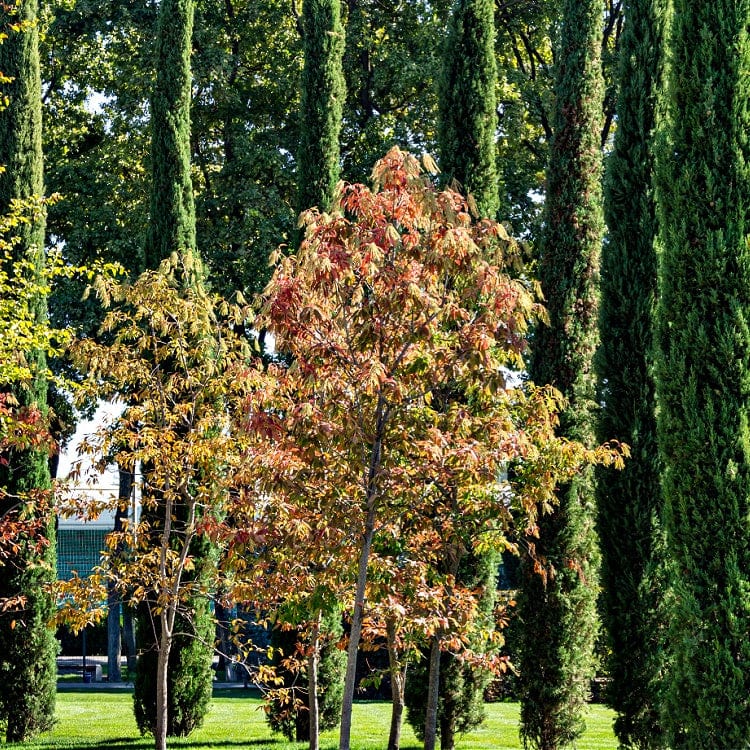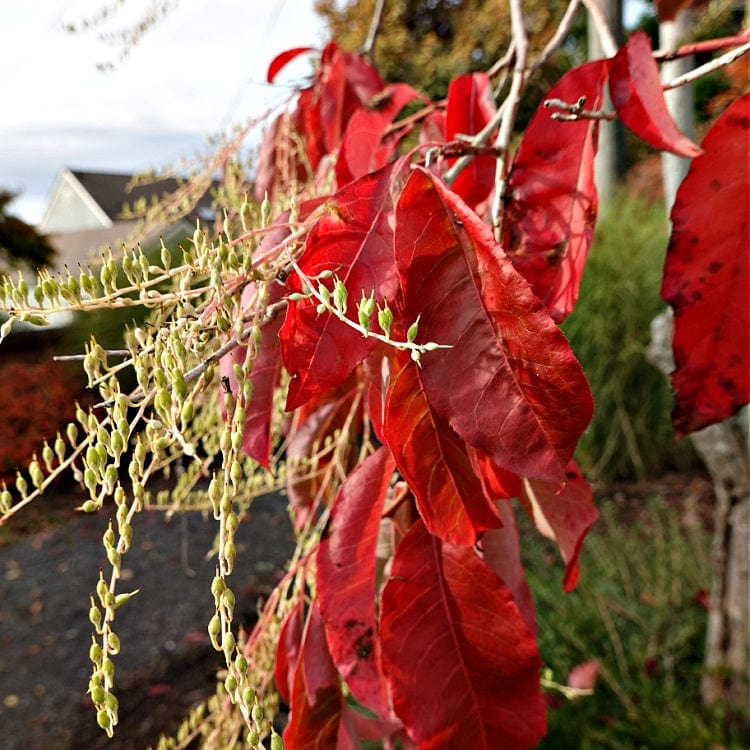Sourwood Tree Seedlings
Couldn't load pickup availability
Ships 10-12 Days
Oxydendrum arboreum - Sourwood Tree Seedlings
Sourwood Tree Seedlings showcase their elegance through unique seasonal color transitions and delightful summer scents while standing out from other natural elements. This plant originates from the eastern United States and excels in well-drained acidic soil while providing continuous visual interest throughout the year in both gardens and woodland areas. During midsummer this plant produces cascading clusters of white, urn-shaped flowers which draw bees and butterflies as pollinators. The flowers increase landscape beauty while serving as a vital nectar supply for helpful insects.
The vibrant colors of this species' fall foliage stand out as its most attractive feature. With falling temperatures, green leaves change into brilliant reds, oranges, and deep burgundies to stand out as spectacular elements in autumn landscapes. This seasonal color transformation makes this species ideal for those who want to create enduring visual appeal in their outdoor areas. Its striking appearance appears after leaf drop since the fiery foliage contrasts with the smooth gray bark.
How to Care for Sourwood Tree Seedlings for Optimal Growth
Establishing this species successfully in a landscape requires a well-prepared planting site and proper care. This plant reaches its full potential in acidic soil with good drainage when it receives enough space to extend its roots. Young plants develop slowly, which extends their life expectancy to several decades after taking time to establish. Selecting a site that receives full to partial sunlight helps develop healthy plants and enhances flowering capacity.
New plants require consistent watering to thrive during their initial years. The plant develops drought tolerance as it matures but requires regular moisture during its initial growth to establish a deep root system. Applying mulch around the plant base maintains soil moisture levels and keeps soil temperatures stable while also minimizing weed growth. Soil with abundant organic matter typically eliminates the need for fertilization, but occasionally, applying acid-forming fertilizer can enhance the plant's vitality.
The plant requires little pruning because it naturally grows into an elegant vertical form. To enhance airflow and protect against disease, you can remove any branches that show signs of damage or that cross each other. Through proper maintenance, this plant will deliver stunning seasonal variations and unique blossoms that will delight gardeners for many years.
The Wildlife Benefits and Ecological Importance of Sourwood Tree Seedlings
This species combines ornamental beauty with vital support for biodiversity. Its flowers produce abundant nectar, which serves as an important food source for bees and plays a critical role in ecosystem pollination. During summer months, its flowers attract butterflies, creating a vibrant atmosphere.
Sourwood Tree Seedlings' thick foliage creates a habitat that shelters small birds and wildlife besides its pollinator conservation role. Certain bird species eat seeds from this plant as a minor food source, and decomposing fallen leaves helps improve soil quality. The species thrives best in undisturbed woodland areas, making it an ideal choice for conservation work to preserve native plant diversity in forest ecosystems.
This Is How Your Plants Will Look upon Delivery
Shipping date depends on the date displayed and chosen when you order from the product's page.
We do not offer warranties on products after 5 days past receiving your plants.


Arrived well packaged. All seem to be in fine health. Sourwood saplings are sizable, need at least a 2 gallon container at first.
They were well packaged and we were sent greater than 100 seedlings in great condition. They did arrive late but likely due to the carrier.
A great choice by far! It's a great choice!
Thank you for the 5 stars! We loved being of service to you and hope we can assist you again soon.

